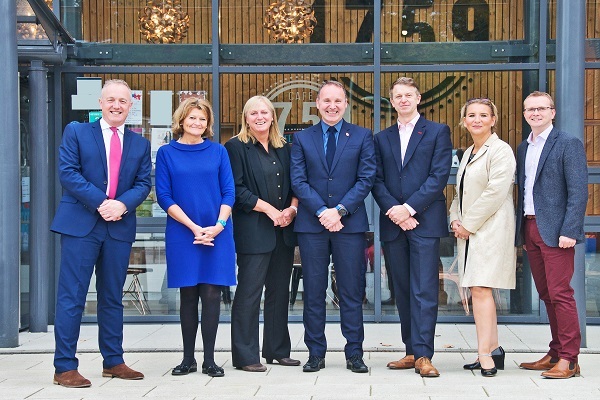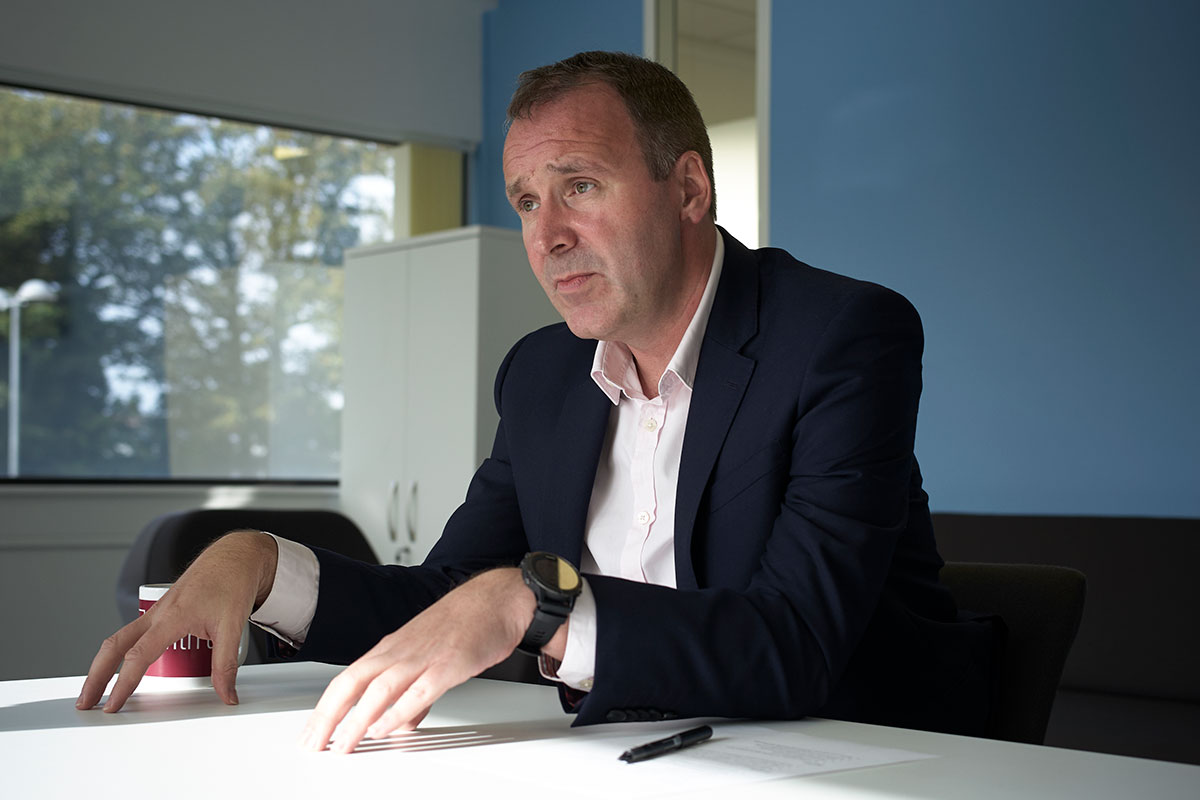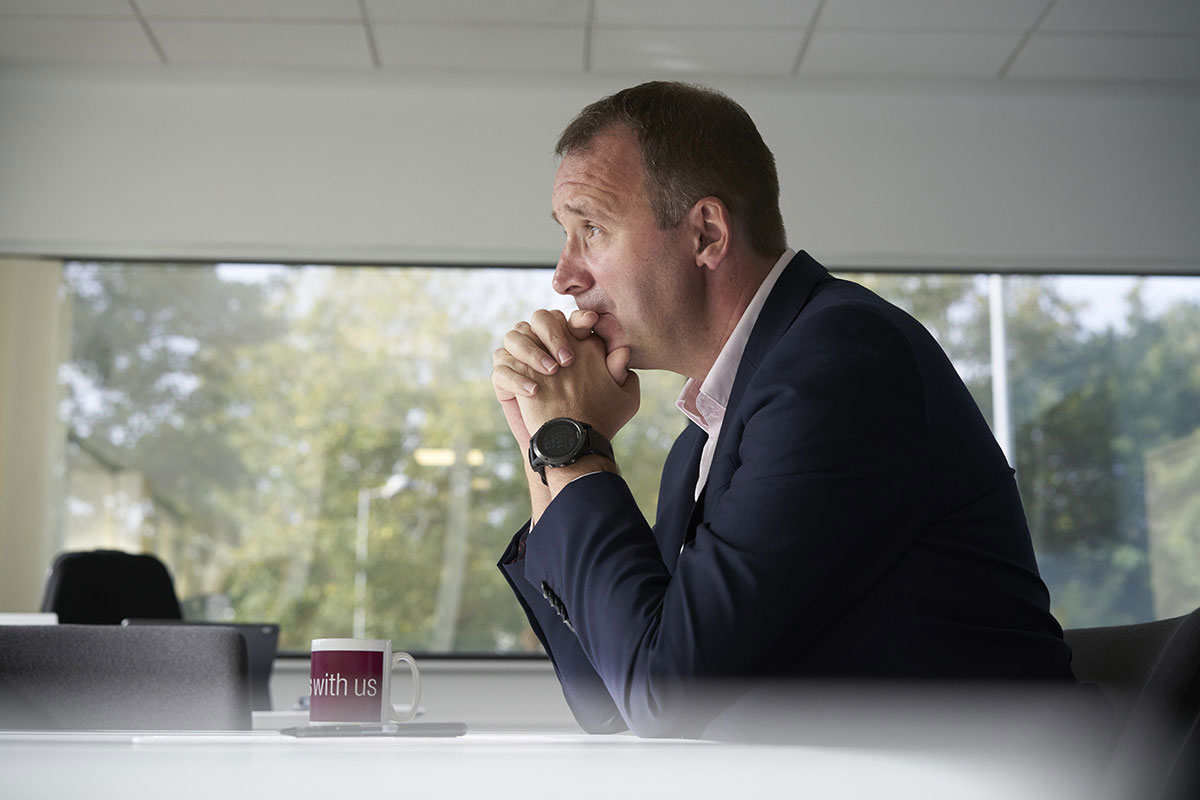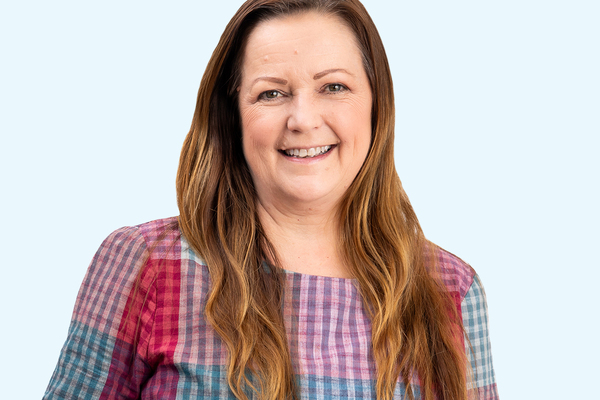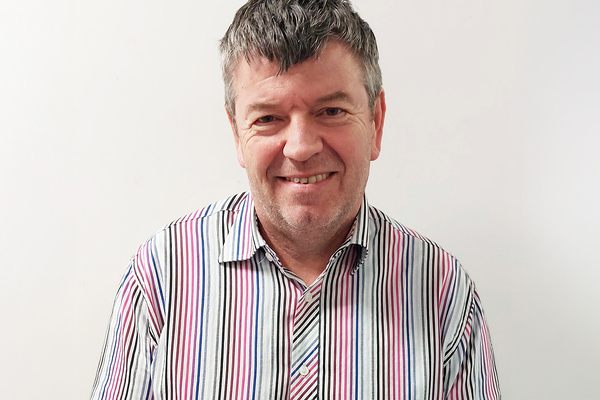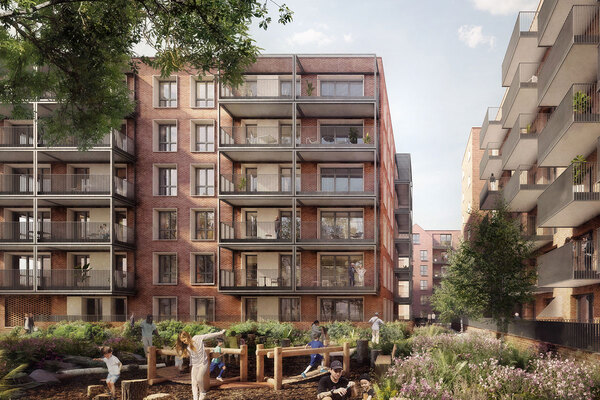Radian boss interview: ‘Size matters in social housing’
Radian has joined forces with Yarlington to create one of the South’s biggest social landlords. Jack Simpson talks to chief executive Gary Orr to find out why. Photography by Julian Anderson
“This is not a vanity deal,” says Gary Orr, Radian’s chief executive, as we sit in his office at the association’s headquarters in Eastleigh, Hampshire.
Mr Orr is talking about one of the biggest partnerships the sector has seen in recent years.
Radian, the 24,000-home organisation he now leads, agreed in November to partner with Yarlington, the association of which he was chief executive for seven years before he joined Radian.
“I’m one of the rare people who can categorically say, ‘I chose housing’”
The partnership has moved at pace since initial talks started early last year. The combined 34,000-home organisation is now one of the biggest in the South, with homes stretching from Bristol to Brighton.
And for Mr Orr, size does matter in social housing.
“Scale and creation of value through collaboration is important,” he explains. “We have complementary geographies, our values match and there is massive additional capacity in bringing both organisations together.”
I am speaking to Mr Orr more than a year into his tenure as Radian boss. In 2018 when he was brought in, Radian was reeling from a governance downgrade that saw it rated G2, following a failed merger with A2Dominion.
An overhaul of the organisation’s processes was required to get back to a G1 rating, which it achieved in March last year. The partnering process began soon afterwards. However, despite the breakneck speed, Mr Orr admits he has relished the challenge.
On the wall of his office is a framed drawing crammed with illustrated words that are supposed to describe Mr Orr – a leaving gift from Yarlington’s staff.
“Great storyteller”, “Irish charm” and “too nice to be a CEO” are some of the descriptors.
It is easy to see why Mr Orr gets the “Mr Nice Guy” tag. He is softly spoken, enthusiastic and has a beaming smile throughout our conversation.
But you don’t get to Mr Orr’s position over a 22-year career just by being nice.
Unlike many of his housing chief executive peers, Mr Orr had this career path in mind from a young age.
“I’m one of the rare people who can categorically say, ‘I chose housing,’” says Mr Orr, who studied housing policy, management and development at Ulster University.
Born and raised in County Down in Northern Ireland in the 1970s, he was aware of the divisions in society and how important housing could be in healing divides. “I grew up during the Troubles,” he explains. “Housing was really high on the agenda and you didn’t have to be too far away from the news to be aware that housing policy was a big issue for communities.”
In the late 1990s, Mr Orr decided to cross the Irish Sea and move to Plymouth. He admits it was a decision as much about the waves in Cornwall as it was about his career. “I was a bit of a surfer at the time,” he explains. “The surf scene in Ireland was in its infancy then and the water was a lot colder.”
After taking up several roles across the social housing sector, it was in 2008 when he got his big break. At the age of just 34, he was appointed chief executive of Homes in Sedgemoor, an ALMO that had been subject to a regulatory inspection.
A “root and branch overhaul” of the ALMO led by Mr Orr saw the organisation’s performance transformed. But after three years, the chance to lead Yarlington arose.
After seven years at the helm of the Yeovil-based association, he joined Radian in August 2018. It had been a difficult year for Radian. Its planned merger with A2Dominion broke down in January, with differences in approaches being given as the reason. A month later, it was hit with a downgrade, after a series of aborted schemes led the regulator to describe its development functions as “not being adequate to support its development growth strategy”.
“We had had the pain of collaboration with A2Dominion and the distractions that had created – did we want to do that again?”
“The association had to get its house in order,” Mr Orr admits. “We needed to improve the systems and reporting, the relationships between the board and executive, and we had to demonstrate we had the skills to develop at scale.”
To do this, Radian beefed up its development team by recruiting Thames Valley regional land director James Pennington as its development director and adding development specialist Jane Alderman to its board.
But Mr Orr says the changes were not focused just on development. He describes the Radian of the time as an organisation that had “lost its smile” and had low staff morale. “We were a siloed organisation with a lot of standalone fiefdoms,” he says. “There was a need to create a sense of shared purpose.”
A major overhaul of its reporting processes and the strengthening of its development operations led to Radian regaining its G1 rating in March last year.
The board and executive team then began to look ahead, and the possibility of partnering with another association was raised.
“It was a tricky situation,” Mr Orr says. “We had had the pain of collaboration with A2Dominion and the distractions that had created – did we want to do that again?”
After discreet approaches were made to a small shortlist of landlords, Yarlington emerged as the frontrunner.
Mr Orr says that his recent experience at Yarlington meant he could provide early due diligence for Radian about its potential partner. However, he is quick to say the discussions were at board level and he had little influence on the decisions.
He is also keen to stress the deal is a partnership rather than a merger, with organisations within the sector often keen to distance themselves from a term sometimes associated with staff reductions and efficiency savings.
“We have a desire to be in control of land and for that, you need a strong balance sheet”
Inside Housing defines a merger as any deal where both group boards combine to form a new organisation, or one becomes a subsidiary of the other. Under these parameters, the deal is a merger. Whatever name it is given, it is clear the driving force behind the deal is boosting development capacity.
“There is so much additional capacity from bringing businesses together. The new organisation can build 10,000 homes in the next 10 years – Radian or Yarlington could not do that,” he explains. Radian currently delivers around 550 homes per year, while Yarlington delivers 250.
We have a desire to be in control of land and for that, you need a strong balance sheet,” says Mr Orr. He also believes the bigger organisation provides greater grant opportunities and the potential to become one of Homes England’s strategic partners.
Mr Orr says that as well as more housebuilding, the deal also enables greater investment in improving communities. He says the partnership has identified eight areas into which extra resources will be channelled to combat social and economic deprivation.
The partnership will undergo a major digital transformation, too. Mr Orr describes Yarlington’s digital shift in recent years as “amazing” and says he wants the larger association to incorporate many of its approaches in this area.
He does concede that a shift to digital processes and the natural efficiencies created through the partnership could result in some job losses. But he doesn’t expect this to happen for at least two years.
“There is no expectation in the short term to go deep and sharp into any of the organisations. It is about building a unified and consistent service that enables us to rationally look at how we can realise efficiencies,” he explains.
However, the partnership will also lead to increased opportunities in some areas.
In January, Homes England handed it the Help to Buy management contract for the whole of the South. This gives it responsibility for administering the Help to Buy equity loan scheme and promoting affordable housing options across the area.
Mr Orr said the bid was bolstered by the geographical reach of the partnership and its understanding of the local housing markets. The partnership has also just completed a deal to buy 631 new homes from LiveWest in Dorset and Hampshire. He says it fought off stiff competition to secure the homes but was able to demonstrate that it had strong financial resilience so could provide assurances that the social housing would be safeguarded.
The busy year for Mr Orr and the partnership looks set to continue. Next month, it will publish its business plan, outlining how it will be structured and operate, and include details of a rebrand.
So, with the deal now completed and the partnership growing in influence and capacity, is that the end of Mr Orr’s plans for further collaboration?
Mr Orr says that while it isn’t high on his priority list, he will never say never.
“We will always be open to collaboration, but it will have to be based upon value creation,” he says. “We are not a regressing organisation, we are moving forward.”
Sign up for our daily newsletter
Already have an account? Click here to manage your newsletters


